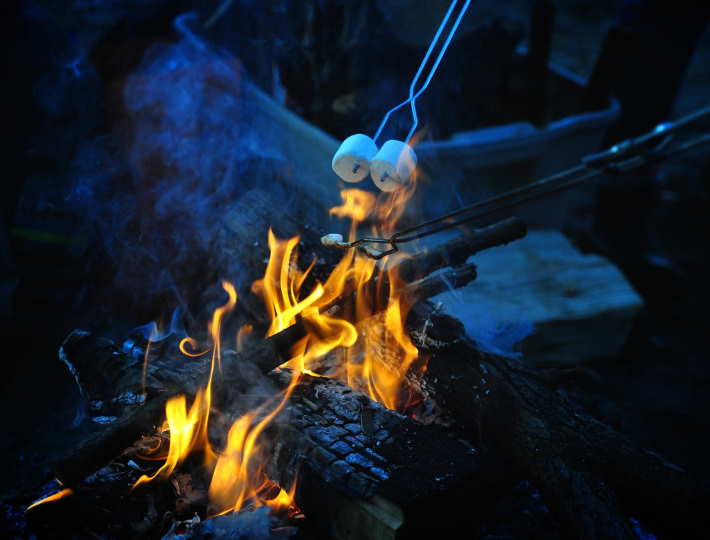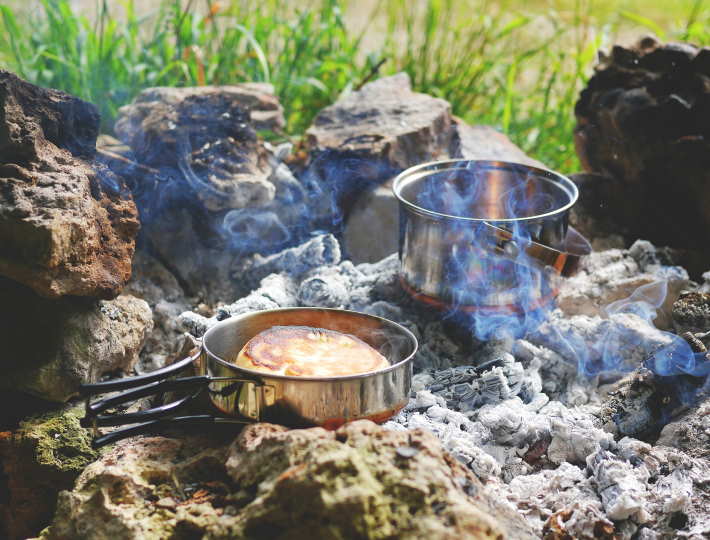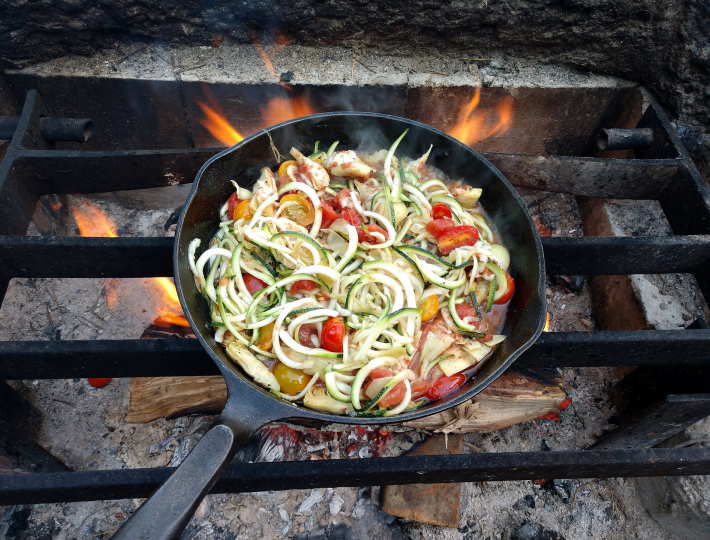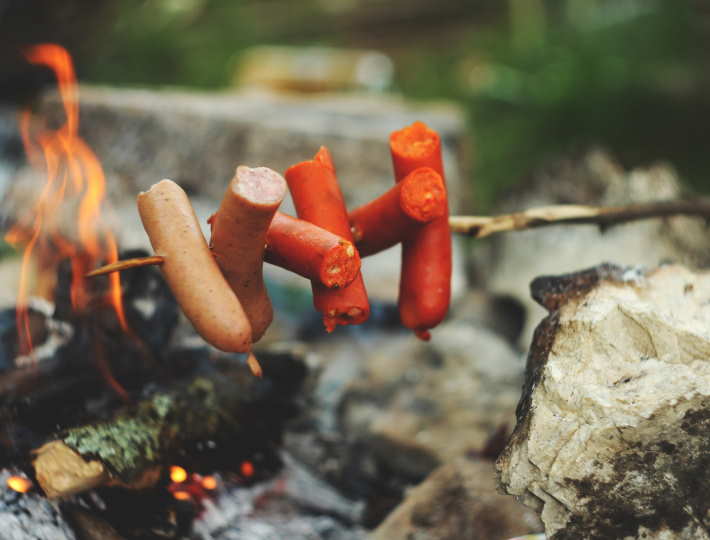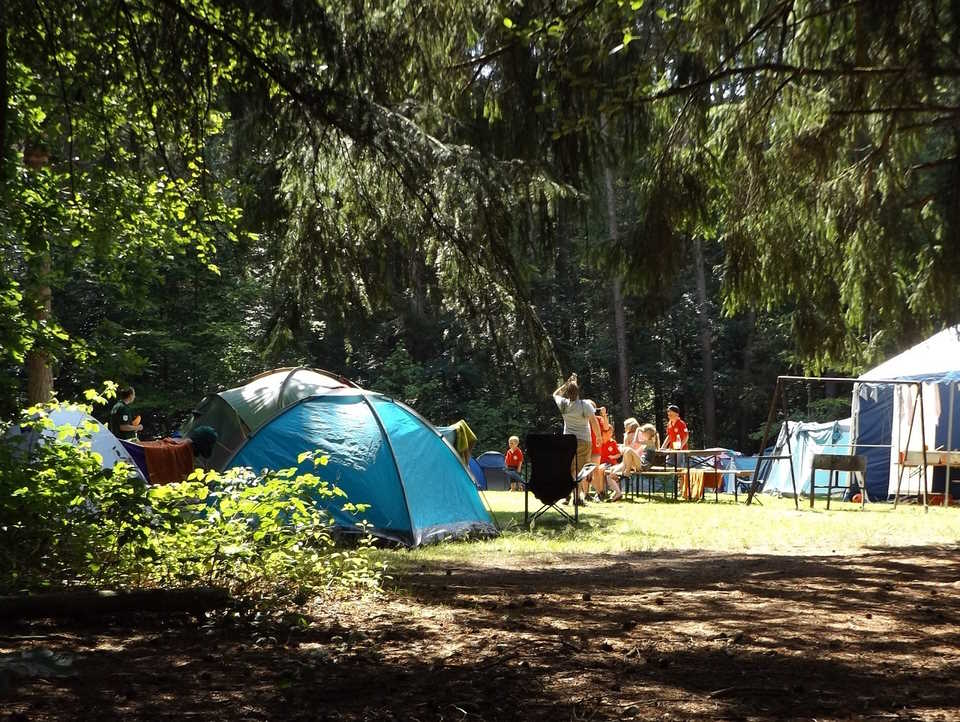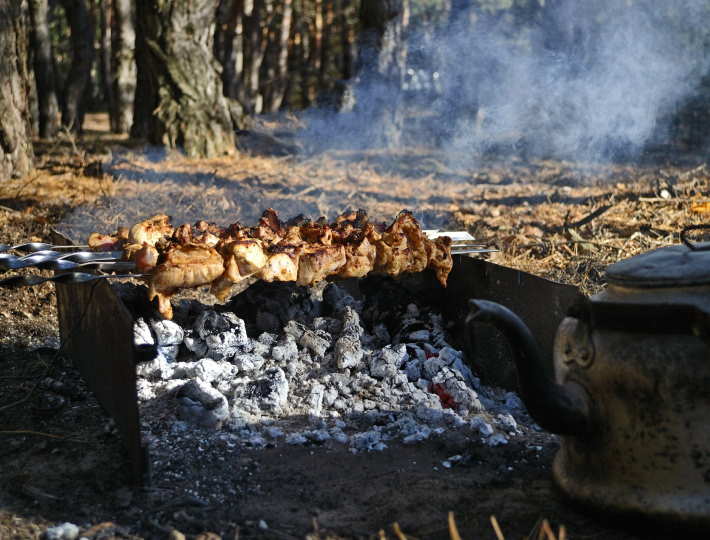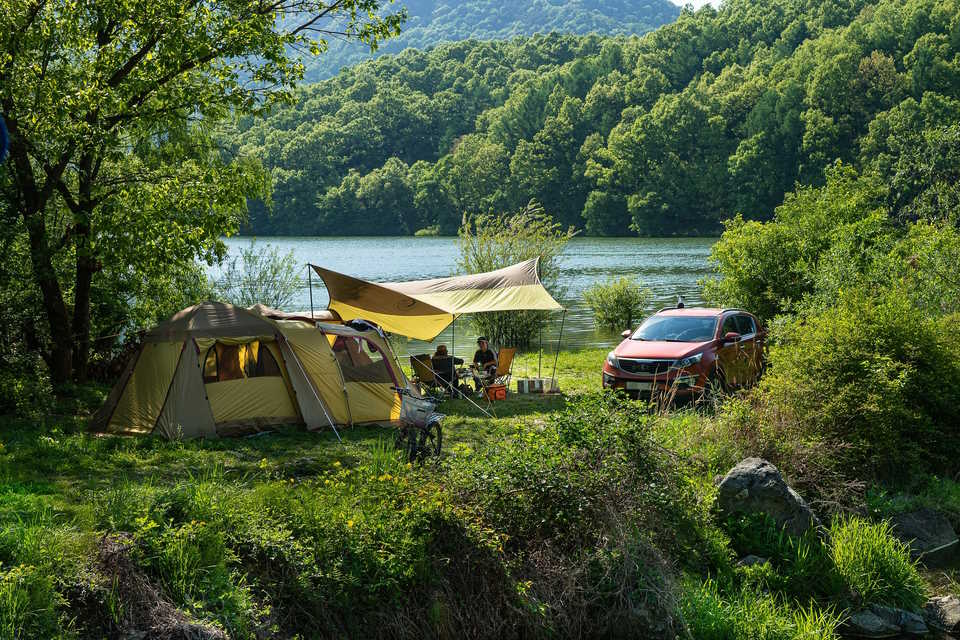If you’re planning a camping trip this summer, nothing beats sitting around a warm and cozy campfire as the stars twinkle above you. But have you ever wondered just how hot those flames are, or if they could melt objects like gold or glass? We’ll answer all your burning questions about the temperature of a campfire, how hot the coals get, and even whether or not it’s possible for a campfire to melt precious metals or delicate materials. So gather ’round the virtual campfire and let’s get started!
Introduction
When it comes to camping, sitting around a campfire is a quintessential experience. But have you ever wondered just how hot a campfire can get?
Well, the heat of a campfire can vary depending on a few factors, such as the type of wood, the amount of oxygen available, and the size of the fire. On average, a well-built campfire can reach temperatures between 900 and 1100 degrees Fahrenheit (482 and 593 degrees Celsius).
This may sound incredibly hot, and it is, but keep in mind that this temperature can vary greatly depending on the aforementioned factors. For example, if the wood you are burning is very dense, such as oak, it can generate more heat than softer woods like pine.
- It’s also important to note that the heat of a campfire is greatest at its base, or where the flames are the strongest. This is because fire requires oxygen to burn, and the bottom of the fire receives the most airflow, which helps it burn more efficiently.
- Additionally, the heat radiating from a campfire can be felt much further away than the actual flames. This is due to the infrared radiation that is produced by the fire, which can travel much farther than the visible flames.
How Hot Do Campfire Coals Get?
Have you ever wondered how hot do campfire coals get? The answer might surprise you. The temperature of hot coals can reach up to 1,200 degrees Fahrenheit (650 degrees Celsius). That’s incredibly hot, and it can cause serious burns or start wildfires if not handled properly.
If you’re planning to cook over a campfire, it’s important to know when the flames have died down to leave glowing coals. This means that most of the volatile gases and other compounds have burned off and the coals are producing consistent heat. Cooking over a thriving flame can cause uneven cooking, burning or charring of your food.
- Remember, too, that different types of wood produce different types of coals. Dense hardwoods like oak and hickory produce hot, long-lasting coals that are great for cooking. Softwoods like pine and spruce produce less dense coals that burn quickly and aren’t ideal for cooking.
- If you’re planning to extinguish a campfire, it’s best to let the coals burn down, then spread them out or smother them with water until they’re cool to the touch. Don’t bury the coals or assume they’re out just because they’re no longer flaming.
| Type of Fire | Temperature |
|---|---|
| Coal Fire | 1,800 to 2,200 degrees Fahrenheit (980 to 1,200 degrees Celsius) |
| Wood Fire | 600 to 900 degrees Fahrenheit (315 to 480 degrees Celsius) |
You might be wondering if a coal fire is hotter than a wood fire. The answer is yes – coal burns at a much higher temperature than wood. In fact, a coal fire can reach temperatures of up to 2,200 degrees Fahrenheit (1,200 degrees Celsius), while a wood fire can only reach temperatures of 600 to 900 degrees Fahrenheit (315 to 480 degrees Celsius). For this reason, coal is often used for industrial purposes like power generation, smelting, and steelmaking.
What Is the Hottest Part of a Campfire?
A campfire is not just a source of light and warmth but is the perfect way to enjoy the great outdoors by creating a gathering place for friends and family. For many, cooking over an open flame adds to the charm of camping. But have you ever wondered what the hottest part of a campfire is? The good news is that scientists have taken the guesswork out of this question.
The hottest part of the campfire is right above the solid fuels. This means that the blazing flames you see licking up from the wood are not actually the hottest part of the fire. Instead, the coals beneath the fire are burning with intense heat and are what makes the fire as hot as it is. The heat source from these coals can reach temperatures up to 2000 degrees Fahrenheit.
The part of the campfire that produces the most heat are called the embers. These are the coals that are left over once the initial wood has burnt through. As the wood burns, it breaks down into charcoal, which is hotter and denser than the original wood. These embers can remain hot for hours, even days, after the fire has gone out. Therefore, it is essential to completely extinguish a fire before leaving the area, to prevent wildfires from starting.
- Understanding the hottest part of a campfire has its practical uses, particularly when cooking on an open flame. Most recipes that use a campfire to cook require the use of hot coals, which can evenly cook food.
- Another important factor to consider when experimenting with open flames is the type of wood you use in your fire. Hardwoods, such as Oak or Hickory, burn hotter than softwoods, such as Pine or Fir. Thus, they produce hotter coals, which are ideal for longer-lasting fires and for cooking food.
| Type of Wood | Approximate Temperature |
|---|---|
| Oak | 2250 degrees Fahrenheit |
| Hickory | 2360 degrees Fahrenheit |
| Pine | 1550 degrees Fahrenheit |
| Fir | 1450 degrees Fahrenheit |
It’s always essential to remember the safety measures when using an open flame. Being cautious with the fire and having a bucket of water within a reachable distance can prevent unwanted accidents. Additionally, never leave the fire unattended, extinguish the fire fully before leaving, and avoid starting a fire during times of drought or dry weather.
Is Coal Fire Hotter Than Wood?
When it comes to starting a fire, many people have debated whether coal or wood is the hotter option. While both have their own unique benefits and drawbacks, it is important to understand the differences in order to make an informed decision.
Firstly, it is important to note that the temperature of a fire depends on a variety of factors, including the type of fuel being used, the amount of oxygen available, and the airflow within the fire. However, in general, coal fires tend to burn hotter than wood fires.
One reason for this is that coal has a higher energy density than wood. This means that it contains more energy per unit volume, which allows it to produce more heat when it is burned. In addition, coal tends to burn more efficiently than wood, which means that more of its energy is converted into heat instead of being lost as smoke or other byproducts.
- However, it is worth noting that coal fires also tend to produce more pollution than wood fires.
- In addition, coal is a non-renewable resource, which means that it is not a sustainable long-term fuel source.
On the other hand, wood fires may not burn as hot as coal fires, but they are often considered to be a more eco-friendly and sustainable option. Wood is a renewable resource, and if harvested responsibly, can be a very effective fuel source. In addition, wood fires tend to produce less pollution than coal fires, which makes them a more environmentally friendly option.
| Coal Fire | Wood Fire |
|---|---|
| Burns hotter | May not burn as hot |
| Higher energy density | Lower energy density |
| Less eco-friendly | More eco-friendly |
Are Coals Hotter Than Fire?
Fire is one of the greatest discoveries of humankind. Its discovery led to many other new inventions and allowed for greater human progress. But have you ever wondered whether coals are hotter than fire? The simple answer is yes, but let’s delve deeper into the science behind it.
A coal is a solid fuel that is formed from plant remains over millions of years. When heated, it produces intense heat due to its high carbon content. This heat can reach up to 2,800 degrees Fahrenheit, which is hotter than an average campfire that is usually between 1,000 to 1,200 degrees Fahrenheit.
- Coals are hotter than fire due to their high carbon content.
- Coals can reach temperatures of up to 2,800 degrees Fahrenheit.
- An average campfire is usually between 1,000 to 1,200 degrees Fahrenheit.
It is important to note that the temperature of the fire depends on several factors such as the type of wood used, the amount of oxygen that is available, and the weather conditions. However, even in optimal conditions, coals will always be hotter than fire.
So, why does this matter? It matters because understanding the science behind heat and fire can help us to make more informed decisions when cooking, camping, or even just sitting around a bonfire. Knowing the temperature of the fire can help us to determine what foods can be cooked over it safely, how long it will take for the fire to die down, and what materials are safe to use around it.
| Temperature | Object |
|---|---|
| 32 degrees Fahrenheit | Freezing water |
| 212 degrees Fahrenheit | Boiling water |
| 1,000-1,200 degrees Fahrenheit | Typical campfire |
| 2,800 degrees Fahrenheit | Burning coal |
Can a Campfire Melt Gold?
Have you ever wondered if a campfire can melt gold? As children, we were fascinated with the idea of melting metals and making something new. But is it really possible to melt gold with a campfire?
The melting point of gold is 1064°C or 1947°F, so it is quite difficult to melt gold using a campfire. The temperature of a typical campfire ranges between 800°C to 1200°C, depending on the type of fuel used and the amount of oxygen supplied to the fire. This temperature range is not enough to melt gold, but it is hot enough to melt other metals like aluminum, copper, and zinc.
So how can you melt gold if a campfire can’t do the job?
If you want to melt gold, you need to use a furnace that can create temperatures of up to 1064°C or higher. This ensures that the gold will melt without any issues. If you try to melt gold with a campfire, you may end up damaging the metal or not melting it at all. It is important to use the right tools and equipment when melting metals to ensure that they are melted properly.
| Can a Campfire Melt Gold? | Melting Point of Gold | Temperature Range of a Campfire |
|---|---|---|
| Yes, but it’s difficult | 1064°C or 1947°F | 800°C to 1200°C |
Can a Campfire Melt Glass?
If you are planning to go camping, you must have already prepared all the essentials that you need to bring with you. Among the most significant things that you need to think about is the firewood. You must have enough firewood to keep the campfire burning throughout the night. One thing that comes to the minds of many is, can a campfire melt glass? This can be a concern if you are planning to drink your beverage from a glass bottle or container. In this blog post, we will discuss if glass can be melted by a campfire.
The simple answer is yes, a campfire can melt glass. However, it highly depends on the type of glass used. Glass contains a mixture of several metals, including silica, soda ash, and limestone. The melting point of glass varies depending on the mixture of metals used to make it. Glass that is composed of pure silica has a melting point of 1,713 degrees Celsius, while the melting point of soda-lime glass is 1,200 degrees Celsius.
The type of glass that is commonly used in camping gear or bottles is borosilicate glass. This type of glass can withstand high temperatures and is less likely to melt even when exposed to a direct flame. The melting point of borosilicate glass is around 825 degrees Celsius, which is higher than the temperature of a typical campfire. However, this doesn’t mean that borosilicate glass is entirely immune to the heat from a campfire. It is still highly recommended that you keep your glass containers or bottles away from the flames.
| Glass Type | Melting Point (in degrees Celsius) |
|---|---|
| Pure Silica Glass | 1,713 |
| Soda-lime Glass | 1,200 |
| Borosilicate Glass | 825 |
So, if you are planning to go camping and bring your glassware or bottles with you, it is safe as long as you keep them away from the flames. You can place your glass containers near the heat source, but make sure that they are not directly exposed to the fire. You can also place them on a rock or any heat-resistant surface that is away from the flames. Remember that safety should always be your top priority when camping. Enjoy the great outdoors and stay safe!





